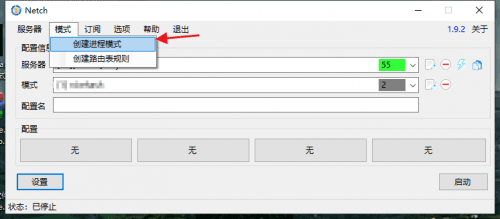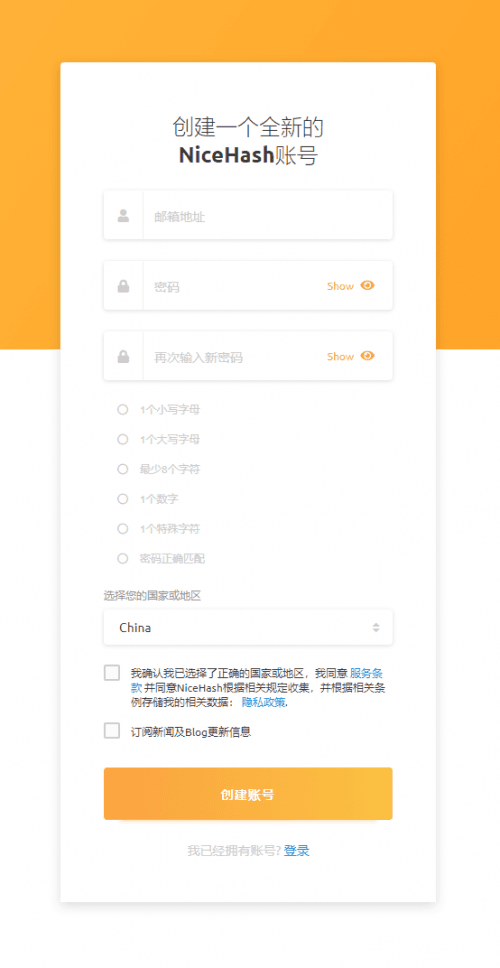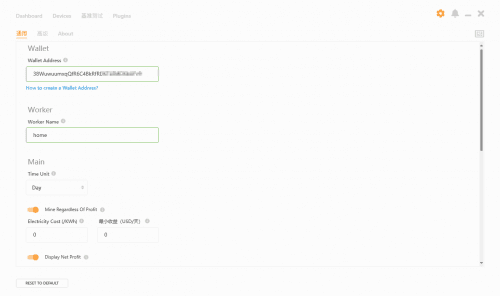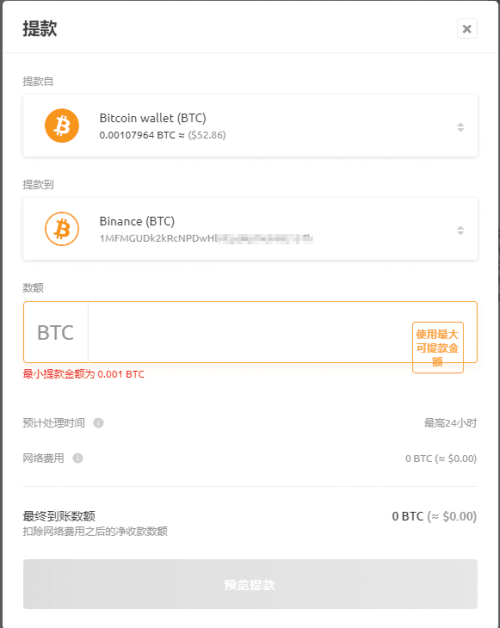Updated on 2021-12-25#
Now both Binance and Huobi have stopped withdrawals, and it is impossible to cash out. It is recommended to switch to OKEX for C2C operations, and the link below has also been updated. Moreover, most exchanges require a VPN to access, and now links to mining pools also require it, so a VPN is essential. I will not share the setup method; some services I use will be displayed on the AFF page. This update includes my latest thoughts on the method.
Currently, my method is to connect to the NiceHash mining pool using GMiner software, providing computing power (see Section 4), and controlling the frequency and temperature of the graphics card with nhmq (Section 1). The connections all go through a proxy (Section 0).
0. Using Netch Proxy Software#
Netch is a game acceleration software that allows programs to go through a proxy channel. With it, we can make all mining software connect to the mining pool via a proxy.
Official download link: https://github.com/netchx/netch
First, we need to add a route, which I won't detail here, and then set the software to use the proxy.
Click to select the folder where the mining software is located. It is best to put all the software together, for example, D:\miner, so that with one setting, all software in the miner folder can use the proxy, and there can be subfolders under the miner folder.
After clicking start, Netch will open another SOCKS5 service, for example, port 2801. If using Gminer, use "--proxy 127.0.0.1:2801" to make Gminer connections go through the proxy. This function is built into Gminer, so if you have other proxy software and know its external port, you can connect directly to the proxy software through Gminer commands without using Netch. General proxy software can usually be found.
Recently, with the rise in coin prices, my personal mining method has also changed. Initially, I used the NiceHash method mainly for situations where the returns on different coins varied greatly. Recently, ETH has skyrocketed, and the returns have far surpassed other coins, so it’s better to mine ETH directly. The method may change in the future, and I will update it at the top of the article. Important positions will be marked in red.
Title 1 introduces controlling temperature through NHQM, with Gminer as the mining tool, connecting to the exchange's mining pool. The exchange's mining pool is daily settlement, meaning whatever is mined that day is paid out, suitable for friends with lower single-card computing power.
Title 2 introduces connecting to the fish pool for mining, with the ETH withdrawal threshold to the wallet being 0.1 ETH, which is relatively high, suitable for friends with multiple cards or high computing power.
Title 3 introduces my earliest method of mining in NiceHash.
1. Control Temperature through NHQM and Connect to Exchange Mining Pool#
Previously, I was providing computing power through NiceHash to exchange for BTC. Now, the trend of BTC is obviously not as strong as ETH, so it’s better to mine ETH directly. However, NHQM's frequency and temperature control are quite good, so I want to continue using this software. I couldn't lower the core frequency as low as NHQM with "MSI Afterburner," so I gave up on that software. Using NHQM to control temperature does not require registration, but to obtain the optimized frequency parameters provided by NiceHash, registration is required to enter the backend and select the status, or refer to its official parameters.
1.1 Download and Use NHQM#
NiceHashQuickMiner GitHub Release Link
After running, click OCTune to enter the frequency management console.
1.2 Adjust Frequency and Control Temperature#
With updates, the numbers after data will also be updated.
ID 1 corresponds to "low" in NiceHash's console for adjusting frequency, dmc is the increased memory frequency, mcc corresponds to the core frequency, which is not increased. ftg is the maximum core temperature, and ftr is the maximum memory temperature. As shown in the figure, I set the core frequency to 930 and the memory frequency to 7401, so the amount of increased memory frequency cannot be found from the official provided files. Therefore, I still recommend registering for NiceHash to adjust and test in the backend of the website.
1.3 Register an Account in the Exchange Mining Pool#
Mining pool selection: Recommended Binance and HuobiOKEX. The advantage of these two is that the returns are daily settlement, meaning whatever is mined is paid directly to the exchange wallet for immediate operation.
Fee rates: Binance 0.5%, Huobi 2.5% (some users say it is now 4%)
If the link does not open, please fill in the referrer as 47678597 when registering on the official website or APP. Thank you.
If the link does not open, please fill in the referrer as 7nqx4 when registering on the official website or APP. Thank you.
There is a general process: first, create an account on the exchange, then enter the exchange mining pool. If you can't find it, replace "www" in the domain name with "pool," for example: pool.huobi.com.
Then create a mining account for the pool, where the mining account name is the username. When mining with the username, fill in the corresponding username.
1.4 Set Up Mining Software#
The mining software I use is Gminer, with a fee of 0.65%, which is relatively low; I have also used NBminer, which is over 1%.
After downloading and extracting, you will find many .bat files. We find mine_eth, and the settings inside are for mining ETH. Right-click to edit and replace the link with the one provided by the exchange.
Then fill in the mining account name you just registered after user. The miner name can be anything, as long as it can distinguish the machine. The api is followed by the port number; enter "127.0.0.1 number" in the browser to open the local monitoring page to check speed and other information.
Example for Binance setup:
miner.exe --algo ethash --server ethash.poolbinance.com:1800 --user tomhome.home --api 5566
Example for Huobi setup:
miner.exe --algo ethash --server en.huobipool.com:1800 --user tomhome.home --api 5566
After starting, wait a moment, and you will be able to see the mining machine information in the pool's statistics.
Finally, a reminder, pay attention to share when closing the software, as the share (submission) time is relatively long, possibly submitting once every ten minutes. To avoid losses, it is recommended to close the software after submitting once.
2. Fish Pool Mining#
Fish Pool Mining Tutorial Link
You need to change the settings of the mining software; after the user position, you can fill in the fish pool login account or directly fill in the ETH wallet address of the exchange. Pay attention to the minimum payment amount:
miner.exe --algo ethash --server eth.f2pool.com:6688 --user 0xF6F8Ba8a2A243dd50D07ebfAfB62eA8086f208c9.guest
3. NiceHash Mining#
Personal mining has several pain points: not knowing which coin to mine, long withdrawal cycles for coins mined to the pool, repeatedly registering on multiple websites to get multiple wallets, and high costs for frequent transfers.
These issues were also problems I encountered in my early mining days, and later I accidentally switched to this method of selling computing power, which I have been using ever since.
To begin with: before operating, you need to master some knowledge of the Windows system, such as using antivirus software, some hardware knowledge, like knowing your graphics card model, and some mathematical ability to calculate returns and costs. Understand the risks; risks refer to using resources that do not belong to you. For example, the recent trend of mining in coffee shops is okay, but friends planning to mine at work should think ahead about the responsibilities they would bear if discovered and how to avoid being found out. Some company network administrators may monitor connections to mining pools, and if detected, it is easy to trace back through the network cable. Therefore, friends with such ideas should analyze their computer knowledge in advance.
By the way, before starting, use a profitability calculator to see if you will lose money; however, most people won't lose money now. Profitability Calculator Link
3.1 Register for NiceHash#
Registration link: nicehash.com
Nicehash is a computing power trading platform where miners can earn cryptocurrency by selling computing power, and buyers can place orders to purchase miners' computing power. Miners provide computing power through the website's software, which automatically switches the coin to mine based on hardware power and market orders.
During the login process, you may need to use Google verification. If you encounter a login issue, it is likely that the verification code did not load, so think of a solution.
After logging in, find the BTC wallet in the wallet tab, click in, and then click "Deposit" to obtain the BTC wallet address, which you will need to fill in the software settings.
3.2 Download the Software#
Download the software from the download center: https://www.nicehash.com/download-center
The software integrates many mining programs in the form of plugins, namely "NiceHash Miner."

3.3 Use the Software#
The first run will automatically download plugins, just wait.
After entering the software, click the gear icon in the upper right corner and fill in the wallet address in "Wallet Address." You can use the Nicehash wallet obtained during registration or an external wallet, such as one from an exchange, but the website does not recommend it. For details, refer to the official help document page.
Fill in the wallet and check the remaining settings if interested, then select the devices in the "Devices" tab. It is not recommended to use CPU, as the output is too low and affects the temperature inside the case.
Return to the "Dashboard" and click the largest button to start. The first run will conduct a benchmark test, just wait; the test results can also be found in the "Benchmark" tab.
It is recommended to use the control tools released by the graphics card manufacturer to control the temperature. Too high a frequency can lead to very high temperatures, damaging the hardware. My testing shows that after exceeding 64 degrees, the increase in computing power is not significant, but power consumption increases a lot. Therefore, I keep it controlled at 64 degrees. If there are no tools, you can also try using Nicehash's adjustment tool. This is also officially recommended: Article Page.
The following image shows my 2070's earnings. In fact, the amount of BTC earned has not changed much over the years, meaning the changes in coin values are not significant; it is the rise in BTC's own price that has increased the earnings. Initially, the amount of BTC was also this much, with earnings of five dollars a day considered high.
3.4 Trading#
BTC prices are unstable, and you can exchange them for stable USDT through trading. The website I choose is Binance. Registration link: www.binance.com.
Similarly, click on BTC recharge in the wallet to obtain the exchange wallet address.
Then return to the Nicehash BTC wallet page, click "Withdraw," enter the exchange wallet address, fill in the amount, and submit. The minimum withdrawal amount is 0.001 BTC, and miner fees can be checked on the official website: Official Document Page.
BTC can be traded on the exchange, and the remaining content can be explored by yourself.
4. Connect to NiceHash Mining Pool through GMiner#
First, we need a NICEHASH account (refer to Section 3) and Gminer software (refer to Section 1.4), as well as a proxy connection (Section 0).
The address of the NiceHash mining pool is "daggerhashimoto.usa-east.nicehash.com:3353," which is the address for ETH. We paste it into the Gminer bat file, resulting in:
miner.exe --proxy 127.0.0.1:2801 --algo ethash --server daggerhashimoto.usa-east.nicehash.com:3353 --user NiceHash account's BTC wallet address --proto stratum
pause
Where proxy is the local SOCKS5 proxy port, and -user is followed by the NiceHash BTC wallet address. Just set it up.
The reason for using this method is that I found the rejection rate of using Netch to proxy the NHMQ software to be a bit high, so I switched to this. It is also possible to use NBminer, but the fee for NBminer is a bit higher.





